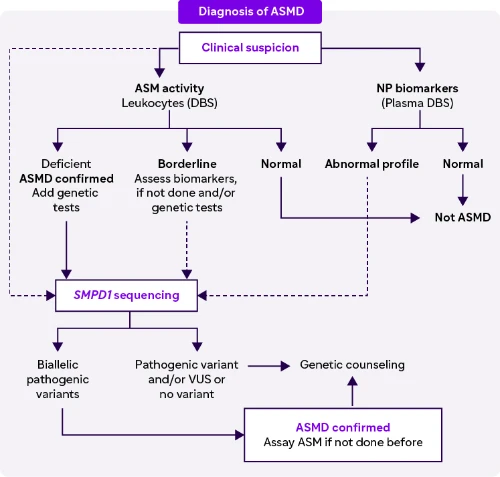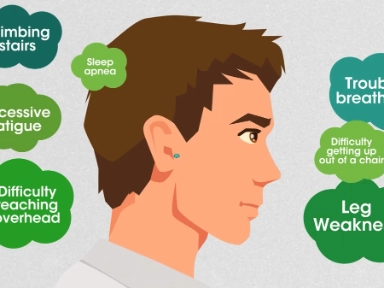Consensus Guidelines for the Clinical Management of ASMD
Study Objective
Guideline development process: AGREE II system and classification
- To develop clinical guidelines
- Standard of care for ASMD patients
- Using an SLR and the experiences of multidisciplinary experts (GDG)
Experts’ Recommendations for Classification and Diagnosis of ASMD
Acute neurovisceral, ASMD type A
Hepatosplenomegaly, proatherogenic lipid profile, thrombocytopenia, interstitial lung disease, skeletal involvement, liver disease, cherry red macula, hypotonia, and rapidly progressive neurodegeneration
Chronic neurovisceral, ASMD type A/B
All symptoms of ASMD type A along with delayed growth and puberty, slowly progressive neurodegeneration and cherry red macula (in few patients), and hypotonia
Chronic visceral, ASMD type B
All symptoms of type A/B with the absence of hypotonia and neurodegeneration and few patients with cherry red macula
Experts’ Recommendations for the Management of ASMD
Multidisciplinary assessment is recommended for all ASMD patients or as needed by:
- Primary care physician
- Metabolic diseases specialist
- Neurologist
Management of ASMD
ERT
- All patients with a confirmed diagnosis of ASMD and significant non-CNS
- Effectiveness of treatment should be monitored
Use of HSCT is experimental
Symptomatic treatment
- CLD should be monitored and treated for gastrointestinal bleeding
- Pulmonary disease may require long-term oxygen therapy
Recommended assessments for all ASMD patients
| Assesment | Frequency |
| Baseline history | At diagnosis
|
| Pulmonary assessment |
|
| Musculoskeletal assessment | At diagnosis, then at each visit |
| Ophthalmologic evaluation | At diagnosis |
AGREE: Appraisal of guidelines for research and evaluation; ASM: Acid sphingomyelinase; ASMD: Acid sphingomyelinase deficiency; CLD: Chronic liver disease; CNS: Central nervous system; CT: Computed tomography; DBS: Dried blood spot; ERT: Enzyme replacement therapy; GDG: Guidelines Development Group; HSCT: Hematopoietic stem cell transplantation; NP: Natriuretic peptides; SLR: Systematic literature review; SMPD1: Sphingomyelin phosphodiesterase 1 gene; VUS: Variant of uncertain significance.

.jpg/jcr:content/science%20hero%20(3).jpg)



